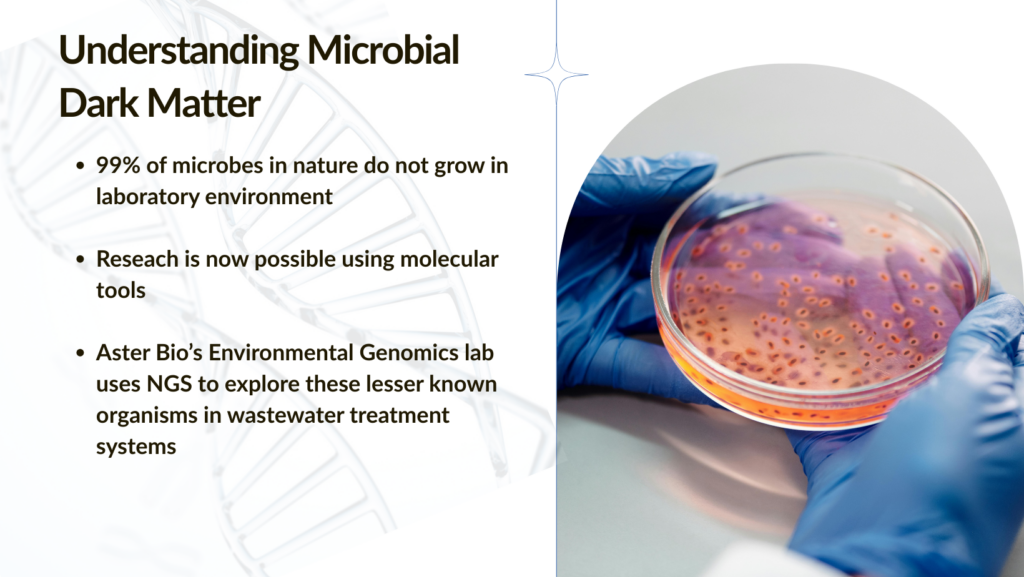
Ever wondered what we’re missing in the microbial world?
Just like astronomical dark matter makes up most of our universe but remains largely mysterious, microbial dark matter represents the hidden majority of life on Earth – over 99% of microbial species that we know exist but can’t grow in our labs.
The Challenge
Traditional microbiology relies on culturing microbes in petri dishes, but most microorganisms simply refuse to grow under artificial conditions. They’re not rare or inactive – they’re often abundant and ecologically crucial – we just haven’t cracked the code for their specific requirements.
The Breakthrough
DNA sequencing changed everything. By extracting genetic material directly from environmental samples (soil, water, human gut), we discovered entire branches of the tree of life that were completely unknown. Suddenly, we could see this vast hidden ecosystem.
Making Sense of the Mystery
Even without culturing these microbes, we can make educated guesses about what they do:
- Phylogenetic clues: If an unknown microbe clusters with sulfate-reducing bacteria, it probably reduces sulfate too
- Gene hunting: Finding nitrogen fixation genes? That microbe likely converts atmospheric nitrogen
- Comparative genomics: Comparing genomes to known relatives helps predict entire metabolic networks
Why It Matters
These hidden microbes likely drive crucial global processes – carbon cycling, ecosystem functioning, and may hold keys to revolutionary advances in wastewater treatment and environmental remediation.
The bottom line: We’re just beginning to illuminate this microbial dark universe, and what we’re finding is revolutionizing our understanding of life on Earth.
